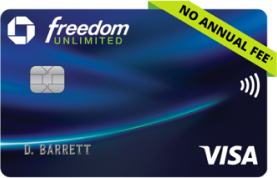![]()
![]()
![]()
![]()
Discover the Top High-Limit Credit Cards for 2025: Unlock Your Maximum Spending Power
What could you do with a single card that comfortably handles $10,000, $25,000, or even $50,000 in spending — without breaking a sweat or your credit score? In 2025, high-limit credit cards aren’t just status symbols; for affluent professionals, frequent travelers, and business owners, they’re strategic tools for unlocking maximum purchasing power, elite perks, and serious rewards.
This guide is your starting point for choosing the best high-limit credit cards 2025, and it fits into a bigger strategy: understanding how different card networks set and increase credit limits and using a proven step‑by‑step guide to qualifying for high‑limit credit cards in 2025 to push your lines well beyond the $10,000 mark.
In the next sections, you’ll discover which premium and luxury cards are actually delivering $10,000+ limits in 2025, how to get approved for them, and how to leverage their rewards and benefits without overspending. By the end, you’ll have a clear, actionable plan to choose the right card, qualify confidently, and build toward truly top‑tier limits — while protecting your credit health.
Top High-Limit Credit Cards for 2025: Starting at $10,000+
If you routinely spend five figures a month on travel, business, or lifestyle, a standard credit card limit simply is not enough. In 2025, high-limit credit cards give you the spending power, flexibility, and premium benefits that match your real needs — and your expectations.
This guide shows you which high-limit credit cards 2025 stand out, how to qualify, and how to use them strategically so you maximize rewards without putting your credit health at risk.
Understanding High-Limit Credit Cards in 2025
High-limit cards have always been associated with status and privilege, but in 2025 they are more about functionality and financial strategy. With rising travel costs, larger online purchases, and growing business expenses, many affluent consumers now need limits well above $10,000 just to operate comfortably.
Generally, a card is considered a high-limit credit card when the issuer extends limits of $10,000+, with some premium products going to $50,000–$100,000+ for top-tier profiles. These limits can adjust dynamically based on your income, assets, and card usage patterns.
Market trends in 2025 show:
- More issuers offering invite-only or relationship-based premium cards.
- Higher starting limits for affluent segments, often beginning at $15,000–$25,000.
- Stronger reward structures on luxury travel, fine dining, and business categories.
Practical example: Imagine you spend $18,000 on a family trip in business class, plus $4,000 on hotel and dining in the same month. A standard card with a $10,000 limit forces you to split payments or prepay mid-cycle. A high-limit card with $40,000+ in available credit allows you to consolidate spending, optimize rewards, and avoid awkward payment constraints.
Actionable tip: Before applying for any premium card, calculate your average monthly spend over the last 6–12 months. Aim for a card whose limit comfortably covers your typical peak month at no more than 40–50% utilization. This protects your credit score while keeping your lifestyle frictionless.
What Are High-Limit Credit Cards and Why Do They Matter?
High-limit credit cards are designed for individuals with strong income, excellent credit, and often significant assets. Unlike standard cards with limits in the $3,000–$8,000 range, these products typically start at $10,000–$20,000 and can reach six figures for top clients.
They matter because they give you:
- Spending capacity for large purchases (real estate deposits, luxury goods, business expenses).
- Cash-flow flexibility when income is irregular or concentrated in bonuses and commissions.
- Enhanced rewards on travel, lifestyle, and professional spending.
- Exclusive perks like elite hotel status, VIP event access, and premium concierge support.
Example: A high-net-worth consultant may charge flights, hotels, client dinners, and event sponsorships totaling $30,000–$50,000 in a single month. With a $75,000 limit, she keeps utilization low, earns premium travel rewards, and separates business spending clearly for accounting.
Actionable tip: If your monthly card spend routinely exceeds 30–40% of your current limit, talk to your bank about a limit increase or consider upgrading to a premium high-limit product to better match your spending profile.
Top High-Limit Credit Cards for 2025
In 2025, the best high-limit credit cards 2025 combine generous limits with high-value rewards and strong protections. While specific offers vary by bank and country, leading premium products share similar characteristics: $10,000+ starting limits, comprehensive travel benefits, and relationship-based underwriting.
Below is an illustrative comparison of two standout types of luxury credit cards for 2025. Names are generalized (Premium Card A and Elite Card B), but the structures reflect what you can expect from major global issuers.
| Feature | Premium Card A | Elite Card B |
|---|---|---|
| Typical Limit Range | $50,000–$150,000+ | $20,000–$75,000 |
| Annual Fee | $450–$750 | $250–$500 |
| Primary Focus | Ultra-premium travel & lifestyle | Travel rewards with tighter controls |
| Key Perks | Concierge, luxury hotel status, airport lounges | Priority boarding, lounge access, solid cash-back |
| Ideal User | High spenders, global travelers, HNWIs | Affluent frequent travelers seeking value |
Example: If you spend $8,000–$12,000 a month, Elite Card B may be enough. If you frequently exceed $25,000 in monthly spend or want top-tier lifestyle perks, Premium Card A usually offers a better experience.
Actionable tip: Start by mapping your annual spending into categories (travel, dining, business, lifestyle). Choose the card where the bonus earning categories match your top three spending areas, not just the one with the highest advertised limit.
Premium Card A: The Ultimate High-Limit Experience
Premium Card A represents the top tier of luxury credit cards 2025, typically issued by global banks to clients with excellent profiles. Limits usually start around $50,000 and may exceed $150,000 based on your income, assets, and relationship with the bank.
Key features:
- Limit: $50,000–$150,000+ (often flexible and reviewed periodically).
- Annual fee: Approximately $450–$750.
- Rewards: 3–5x points on flights and hotels, 2–3x on dining and luxury retail.
- Perks: Global lounge access, premium travel insurance, hotel elite status, 24/7 concierge, VIP event invitations.
Practical scenario: You book a last-minute first-class ticket for $12,000, a five-star hotel stay for $6,000, and host a private event for $10,000 — all in the same billing cycle. Premium Card A comfortably absorbs the $28,000+ spend, keeps utilization low, and may earn over 100,000 points in a single month, enough for multiple business-class tickets.
Actionable tip: With cards like Premium Card A, set a monthly redemption plan. Decide in advance whether you will use points primarily for business-class flights, hotel upgrades, or statement credits, and channel most of your high-value spending into the bonus categories that support this goal.
Elite Card B: Exclusive Rewards and Limitations
Elite Card B targets affluent travelers who want strong rewards and elevated service, but with slightly more controlled limits and a lower annual fee. Limits typically range from $20,000–$75,000, depending on your profile.
Key features:
- Limit: $20,000–$75,000 for qualified applicants.
- Annual fee: Around $250–$500.
- Rewards: 2–3x points on travel and dining, 1–1.5x on other purchases.
- Perks: Priority check-in/boarding, selected lounge access, travel protections, occasional hotel and airline discounts.
Eligibility nuances: Issuers may require a credit score above 720, stable annual income above $80,000–$120,000, and a clean payment history. Relationship banking (maintaining assets with the bank) can push you to the higher end of the limit range.
Example: A frequent business traveler who spends $5,000–$10,000 per month on flights and hotels can use Elite Card B to earn accelerated travel rewards and enjoy lounge access without paying the very high fees of ultra-premium cards.
Actionable tip: If you are unsure whether Premium Card A or Elite Card B fits you better, start with Elite Card B. After 6–12 months of strong usage and full payments, ask your bank about upgrading to a higher tier based on your track record.
How to Qualify and Maximize Your High-Limit Credit Card
Securing a high-limit card is not just about having a high income. Issuers use sophisticated models that look at your credit score, utilization, payment history, income stability, existing banking relationships, and even your asset base.
In 2025, many premium issuers also consider behavioral data: how you use existing cards, whether you pay in full, and how you respond to past limit increases. To get the best limits and terms, you need to position yourself strategically before applying.
Example: Two applicants both earn $200,000 per year. One has a 780 credit score, low utilization, and a 5-year relationship with the bank. The other has a 710 score and higher utilization. The first applicant is far more likely to receive a $50,000+ limit on approval, while the second might be offered $15,000–$20,000 initially.
Actionable tip: 3–6 months before applying for a high-limit card, focus on lowering your overall utilization below 20–30%, paying off smaller balances, and avoiding new hard inquiries. This timing can significantly improve both your approval odds and initial limit.
Eligibility Criteria for Premium High-Limit Cards
While each bank has its own model, premium high-limit cards in 2025 typically expect:
- Credit score: 740+ for top-tier cards, 700+ for mid-premium products.
- Income: Often $80,000–$100,000+ for entry premium; $150,000–$250,000+ for ultra-premium.
- Low utilization: Ideally under 30%, preferably under 20% on existing revolving credit.
- Clean history: No late payments in the last 24 months, no recent charge-offs or collections.
- Banking relationship: High deposits, investments, or private banking status can strongly influence both approval and limit size.
Practical example: A professional earning $180,000 annually with a 760 score, 15% utilization, and a long-standing private banking relationship has an excellent chance of securing a $50,000+ limit on a premium card with a major global bank.
Actionable tip: Before applying, gather documentation such as recent tax returns, pay stubs, bank statements, and investment statements. If your income includes bonuses or variable compensation, be ready to explain it, as this can support a higher requested limit.
Strategies to Leverage Your High-Limit Credit Card Effectively
Once you have the card, the challenge is using it in a way that maximizes rewards without creating unnecessary risk. A high limit is an opportunity, but it can quickly become a liability if you treat it like free money.
Focus on three pillars: smart spending, efficient redemption, and disciplined repayment.
- Channel large, planned expenses (tuition, business travel, renovations) through the card to earn maximum points.
- Redeem points for high-value uses (business-class flights, premium hotels) instead of low-value gift cards.
- Automate payments to clear the statement in full or maintain very low carried balances.
Example: Instead of paying a $20,000 home renovation in cash or bank transfer, you pay with your high-limit card, earn tens of thousands of points, then immediately move funds from your savings to pay the statement in full before interest accrues.
Actionable tip: Set a personal rule that, even with a high-limit card, your self-imposed spending cap stays within what you can pay off in 30–45 days from your current cash flow or reserves. The limit is the bank’s number — your cap should be your own.
Responsible Use and Credit Health Management
High-limit cards can dramatically improve your credit utilization ratio and overall credit score — if used correctly. But they can also tempt you to overspend and mask the real weight of your obligations because minimum payments remain relatively small.
Maintaining excellent credit health means treating your high limit as a tool, not as an invitation. Regular monitoring and clear rules around spending and repayment are essential in 2025, as credit bureaus and lenders rely more on detailed behavior patterns.
Example: A user with a $60,000 limit who keeps their balance under $12,000 (20% utilization) and pays on time every month will likely see their score strengthen over time, making future approvals and limit increases even easier.
Actionable tip: Use alerts from your bank or a credit monitoring service to notify you if utilization rises above a threshold you choose (for example, 30%). This keeps your spending in check without constant manual tracking.
Maintaining Credit Score and Managing Risks
Your credit score is shaped by payment history, utilization, account age, inquiries, and credit mix. High-limit cards touch several of these factors directly.
To protect your credit while leveraging a large limit:
- Always pay on time: A single 30-day late payment can drop your score by 60–100 points.
- Keep utilization low: Aim for under 30% overall, preferably 10–20% on your high-limit card.
- Monitor reports: Check your credit reports at least twice a year for errors or fraud.
- Avoid unnecessary hard inquiries: Space out new applications, especially before major loans.
Example: A client with a $100,000 limit who regularly carries $40,000 in revolving debt (40% utilization) may see their score stagnate or fall, even if they never miss a payment. Lowering that balance to $10,000–$20,000 can significantly improve their credit profile.
Actionable tip: If you must carry a balance temporarily, plan a paydown schedule and set automatic payments aligned with your cash inflows (bonuses, commissions, dividend payouts) so the balance returns to a low level within a defined period.
Best Practices for Responsible High-Limit Usage
To enjoy the full advantages of a high-limit card without compromising your financial security, you need clear, simple rules.
Best practices include:
- Budgeting with intent: Define monthly limits by category (travel, dining, business) and stick to them.
- Separating personal and business spend: Use distinct cards or clear tagging to avoid confusion.
- Reviewing statements monthly: Scan for unusual transactions, duplicate charges, or subscription creep.
- Leveraging insurer and card protections: Use purchase protection, extended warranty, and travel insurance instead of paying extra elsewhere.
Example: A high-net-worth individual sets a rule that personal lifestyle spending on the card will not exceed $8,000 per month, even though their limit is $80,000. They review statements every month and cancel unused subscriptions, redirecting that cash to investments.
Actionable tip: Schedule a brief monthly “card review” meeting with yourself or your financial advisor. In 10–15 minutes, review your statement, confirm transactions, evaluate rewards earned, and decide whether to redeem or save for a larger goal.
Conclusion: Choose Power, Not Pressure
High-limit credit cards in 2025 offer more than prestige. They provide the spending power, rewards, and protections that sophisticated consumers and high-income professionals need. The key is choosing the right product, qualifying strategically, and using the limit to your advantage — not as an excuse to overspend.
Focus on cards whose limits, rewards, and perks match your lifestyle, keep your utilization low, and treat your card as a tool to enhance your financial flexibility. When managed responsibly, a high-limit card can strengthen your credit profile and unlock opportunities worldwide.
If you are ready to take the next step, consider speaking with a financial advisor or your private banker to review personalized high-limit options and potential pre-qualification offers tailored to your situation.
Final Thoughts: Turn Your Credit Limit into a Strategic Advantage
By now, you’ve seen how the right high-limit credit card in 2025 can be far more than a larger line of credit. It’s a tool for optimizing cash flow, unlocking luxury benefits, and strengthening your overall financial strategy—provided you choose carefully and use it responsibly.
The key is alignment: matching a card’s limit, rewards, and perks to your lifestyle, meeting the eligibility criteria with confidence, and then managing your spending and repayments in a way that protects and enhances your credit health.
If you approach high-limit credit as a strategic asset rather than simply extra spending power, you position yourself to capture premium rewards, elite travel experiences, and greater financial flexibility throughout 2025 and beyond.






